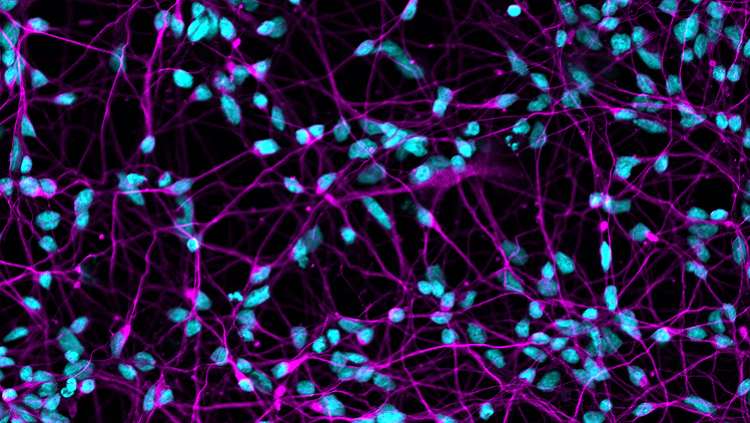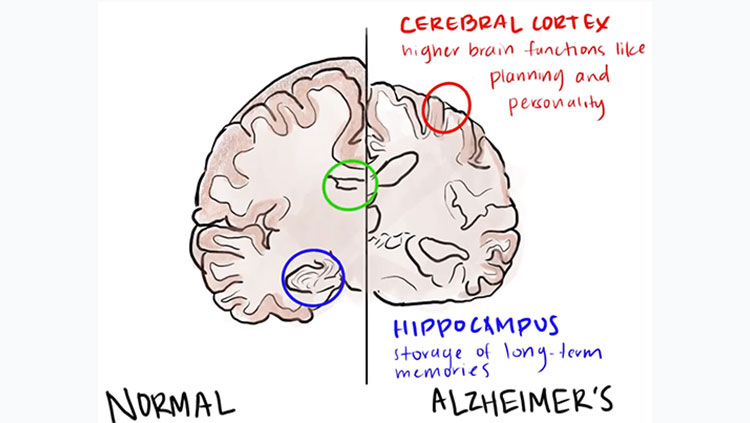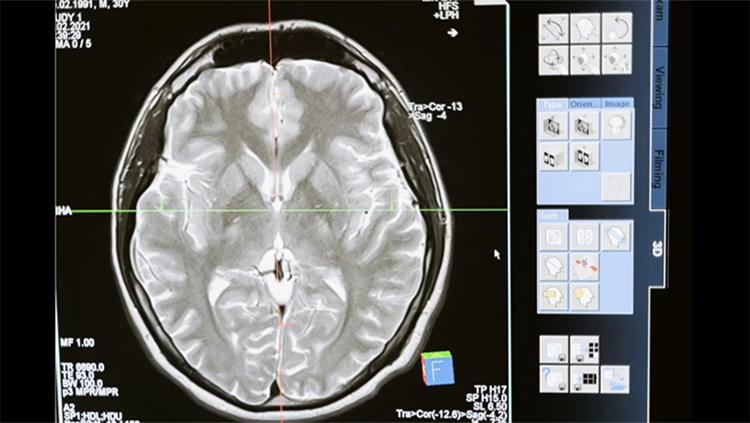In Search of the Genes Behind Parkinson’s Disease
- Published23 Apr 2019
- Author Michael W. Richardson
- Source BrainFacts/SfN

Researchers are on the hunt for genes associated with Parkinson’s disease. During the course of the degenerative disease, clumps of tangled proteins accumulate in the brain and kill neurons. A protein called alpha-synuclein is the main component of these protein clumps. Scientists grew human neurons (shown here) in the lab to identify the genetic switches that can reduce alpha-synuclein production as potential therapeutics.
The nuclei of the neurons are labeled in blue, while microtubules, which function as cellular scaffolding, are labeled in purple. These cell cultures may help researchers identify potential therapies to help regulate the production of alpha-synuclein and help prevent Parkinson’s disease in future patients.
CONTENT PROVIDED BY
BrainFacts/SfN
References
Also In Neurodegenerative Disorders
Trending
Popular articles on BrainFacts.org



.jpg)














